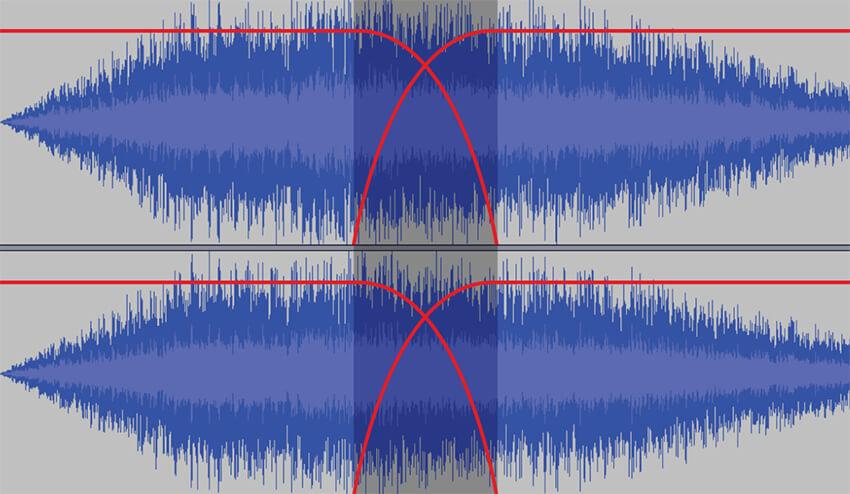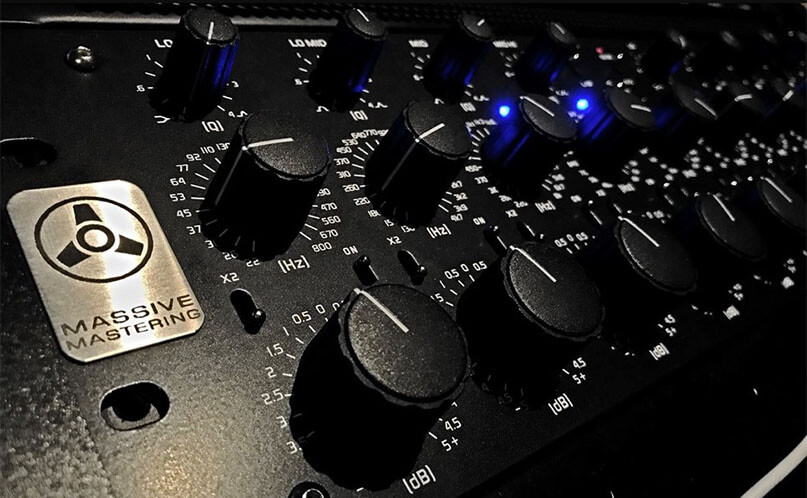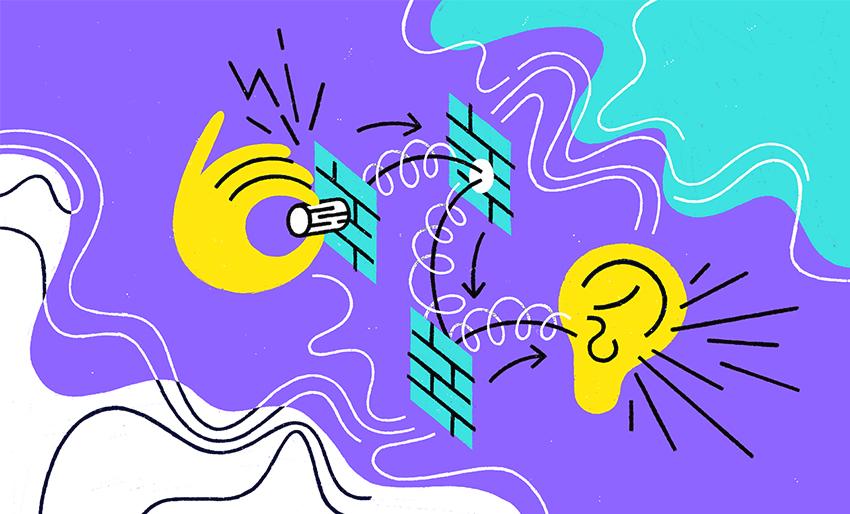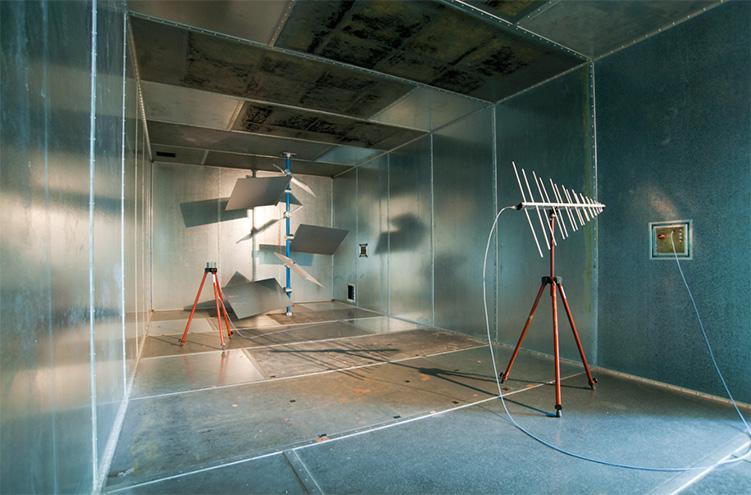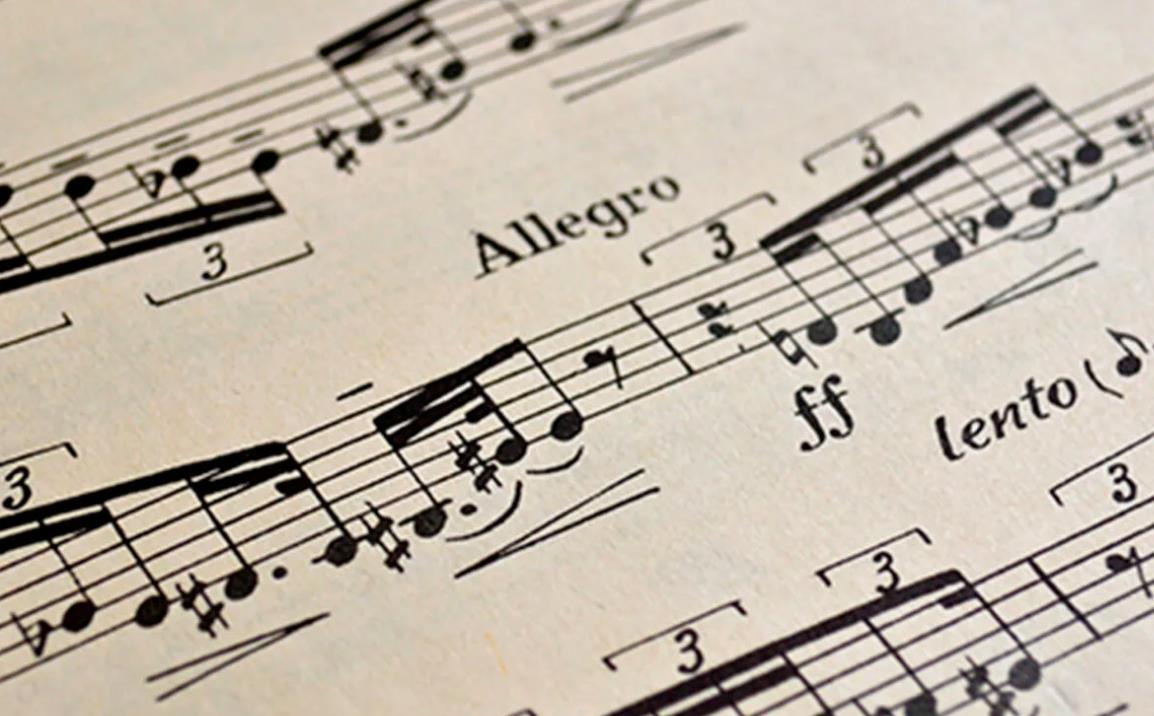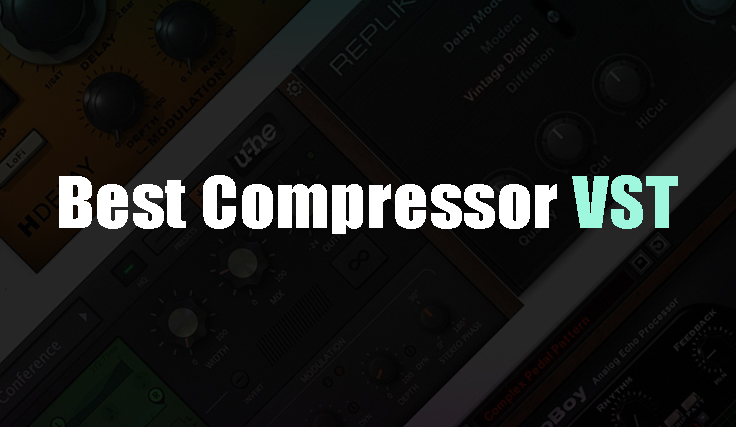Mixing music

Mixing music is one of the main stages of production. Without it, the song does not sound like a finished piece and remains a demo recording. Aspiring musicians face disappointment at some point. You came up with a groove beat, a catchy melody, a beautiful harmony. Then you picked up high-quality samples, found interesting synthesizer presets. It seems that everything should sound cool and harmonious. But you turn on your creation to your friends and see that they are not impressed. And you understand that something is missing. All that is missing is mixing.
The situation with live instruments is even worse. You play at the rehearsal room, you get high, you feel the drive. You can already imagine how crowds of fans flock to your concert, how the tracks are gaining millions of plays. But you record your material and realize that everything is not as cool as it seemed at the rehearsal. And it seems like the guitars are tuned, and you play smoothly, and you can’t find fault with the arrangement, but without mixing the music does not sound.
Even a song with one acoustic guitar needs processing, and compositions with dense instrumentation even more. You need to mix all the tracks together so that they play consistently, do not get out of the general canvas and form one cool mix. In addition, when recording, flaws, unfortunate places, overtones always appear. Audio files need to be edited and cleaned first, and then processed.
What is music mixing?
Basically, this is loudness balance, frequency balance and coloration. There are three components in total. But they are so laborious that they take a lot of time and effort. And that’s not counting the constant development of skills, training and education. This job requires a well-developed hearing tailored for specific tasks. And mixing music solves many such problems.
1. Elimination of recording flaws. In order for the music to sound rhythmically, all the parts are aligned to a common grid, so that unpleasant resonances do not press on the ears, they are sought out and cut out. In vocals the intonation must be corrected. There are very few singers who perfectly hit the notes. Poor sounding instruments make them look more beautiful and fat;
2. Resolving conflicts between instruments. Many people think that this is music mixing. However, this is only a small part of it. In order for the sounds to «sit» in the mix together, they are leveled in volume, equalized, allocated to each place in the stereo picture, compressed, glued together with group effects, etc.;
3. Building the scene. This also applies in part to conflict resolution. But in this way, the sound engineer also makes the sound image more beautiful, interesting, rich and pleasing to the ear. He will bring something to the fore, move something further away, put something on the left, something else a little more to the left, etc. Stage arrangement is often used when mixing live music. We seem to be watching the band’s performance: on the left is a guitarist, several backing vocalists are nearby, on the right are trumpeters, and a keyboard player is closer to the center. And for a dense electronic arrangement, you can simply make a wall of sound in which everything merges;
4. Giving the track color. When mixing the music of indie artists, this may not be the primary thing. But all commercial pop music has its own color: bold or intelligent, bright or soft, dry or rich. It’s the same with styles. Kick in hip-hop is not the same as kick in hard rock, although the sources may be almost the same. New rap and old school rap sound very different;
5. Ensuring broadcasting. Mixing music on high-end monitors tends to make music sound equally good on headphones and on usual speakers. Track has to «rock» in the car, be picky in the mall, match the ranges of smartphone and laptop. This is called the word “broadcast”.
What do you need to mix music?
Musicians have been honing their skills for years, looking for new moves and techniques, analyzing hits, experimenting. But even without serious preparation and knowledge, a beginner can sit down at a computer, open an online sequencer (for example, Amped Studio) and sketch out a beat in half an hour. Mixing music is more complicated. Special resources are needed here.
1. Trained hearing
The more time a person spends on balancing, equalizing, analyzing references, the better he is at mixing. Musicians are not recommended to mix their songs on their own, because other ears will hear much better the shortcomings to which the author is accustomed during the work on his creation. An outside sound engineer has the experience, skill, knowledge and freshness of perception.
However, sometimes music mixing is limited only to finding balance. Some arrangers create good-sounding tracks right away. And if you are scrupulous about your material, then you can greatly help the mix engineer. The same thing happens when the mix after mastering remains practically unchanged: it’s just that the one who mixed has already brought it closer to the ideal.
2. Monitoring
It is clear that music needs to be reproduced through something. But in this case, the quality of the sound equipment will affect the quality of the mix. Moreover, if there is a choice between expensive speakers and inexpensive monitors, it is better to choose the latter.
It is not recommended to mix on ordinary acoustics, especially on an expensive one. The fact is that such acoustics always embellish the sound, hiding all kinds of artifacts that easily pop up on music speakers with a power of 1 W or more. For mixing music, you should use exclusively professional monitors. They are designed in such a way as to reveal all the flaws in the sound and make them audible. That is, they reproduce any sound in its original form, which makes it easier for the sound engineer.
You can also mix music with headphones. But professionals try to avoid this. Headphones do not provide an adequate stereo picture. And in the end, the song will be listened to in space, and it also needs to be evaluated in space. Although today various programs are being sold that correct the sound of headphones, bringing it closer to the studio. They seem to make a professional studio with monitors out of headphones.
But mixing music with headphones has its advantages. For example, getting rid of the influence of the room. The sound passing through the speakers takes on a specific color. Therefore, on different speakers, on different monitors, in different headphones, the same song sounds differently. But this is not so bad. The sound wave is reflected from the walls, and in different rooms it will acquire different characteristics.
With headphones, you can mix music in the worst, unprepared rooms. But to work on speakers or monitors, the room needs to be prepared. The most affordable way is to muffle everything with mineral wool, blackout curtains, sound-absorbing panels, etc. But this is a topic for a separate discussion. In any case, try to test your mix on different speakers and in different rooms.
3. Sound interface
Any computer that can output sound to speakers has a built-in audio interface. But why is this not enough for mixing music? The fact is that this device is equipped with an ADC and a DAC.
An ADC (analog-to-digital converter) converts live, analog sound (voice, guitar chords, drum beats) into a digital code, that is, it writes it to a computer. A DAC (digital-to-analog converter), on the other hand, makes this code sound, that is, outputs it to the speakers.
If we’re not going to record anything, we don’t need an ADC at all. But a DAC for mixing music is needed and should be of good quality. The quality of sound cards built into the computer leaves much to be desired. Therefore, a musician or novice sound engineer is advised to get an external audio card. Therefore, a musician or novice sound engineer is recommended to get an external audio card, and the more expensive it is, the better.
But this device works in conjunction with speakers. If you do not have professional monitors, then the audio interface will be of no use. Therefore, at the start, you can use the built-in computer card. You don’t have to wait until you get the equipment you want. Always use what you have at hand.
4. Software
You can mix music in the same program where you did the arrangement. Most sequencers are versatile, allowing you to record live instruments, make beats, edit parts, work with MIDI, mix, master, and much more. You will also need processing plugins: equalizers, compressors, etc. They come with many programs.
Mixing music in online sequencers allows you to do without any programs and plug-ins altogether. All you need is a computer, tablet or smartphone with headphones. For example, the functionality of Amped Studio gives you all the possibilities to mix a song. Here you can build a balance between tracks, pan them, even automate panning and volume for each instrument. A Premium account opens up even more automation options.
Amped Studio has built-in compressors, EQ, gate, reverb and many other effects. You don’t even have to install any VST plugins, although this sequencer allows you to use VSTs. We mentioned that it is important to listen to the mix on different speakers for good mixing. Amped Studio opens from any device that has a browser. That is, we can check the mix anywhere: for example, visiting friends or parents.
This online program also gives access to multiple accounts. All musicians from the group can work in it, listen to tracks, make changes, try unusual solutions, correct something. This makes music mixing more objective. The more ears the better. Fresh perception only helps the work.
How to mix the song?
We’ll walk through this process step by step later, from routing to processing the master channel. But first, let’s look at the mixing of music from the outside in order to grasp the essence, and not repeat the actions mechanically. We will find out what exactly the sound engineer does when he mixes the composition, and why he does it.
1. Volume balance
Precisely set levels of volume already make the song assembled. But if the volume of individual tracks is constantly changing, the mix will not be stable. Therefore, instruments with obvious attacks, peaks and dips must be compressed. Compression narrows the range, eliminating the difference between soft and loud sounds.
Mixing music isn’t just about flattening and anti-aliasing, however. With the help of the volume faders, we can build perspective, just like in painting. The main instruments can be made louder and thus brought forward. What plays quieter takes a back seat. And let the filling little things sound somewhere very far away.
Changing the balance while playing the mix helps to make the song more dramatic, dynamic, energetic. Automation is one of the most important techniques for mixing music. We can automate the volume by drawing a line along which the level will change. And then the balances will shift: another instrument will come to the fore, other accents will appear, the groove will change.
2. Frequency balance
Each song has a unique frequency response (AFC). But different instruments live in different ranges. When mixing music, they build up a balanced picture. Although it is not necessary to achieve a flat frequency response.
- The Kick and Bass Guitar will hold the low from about 40 to 800 hertz. At the same time, they also have a frequency of presence (ringing strings or clicking a beater) – in the region of 1000 Hz.
- The Snare range starts at about 200 Hz and extends all the way up. At the same time, it can have a tight low around 100 Hz and a bright high around 7000 Hz.
- Hi-hat and other cymbals fill the full mid and high frequency range from 300 Hz and above. But often they are severely cut, leaving only the very top.
- The electric guitar is in the middle, from 300 to 5000 Hz. Moreover, peaks and dips in this area can be distributed in the most unusual way.
- The piano’s range is approximately 80 to 10,000 Hz. Just like an acoustic guitar.
- Synthesizers can occupy a wide variety of ranges depending on the nature of the sound.
But for mixing music, instrument ranges are not very important. The main thing is that the kick and bass are responsible for the bottom, the cymbals are responsible for the top, the harmony instruments are located in the middle, and the vocals hang above all this, which occupies everything from bottom to top. Much more important are the specific frequencies and the effect that their amplification or attenuation gives.
- 30, 60 or 100 Hz – the main low frequency of kick and bass. If we have a low kick and the bass sits at 100 Hz, then we cut out 100 Hz at the kick and add at the bass. And vice versa. This is how they work in concert. The snare power is also hidden at 100 Hz.
- 250 Hz – fullness or boomy. If you make a big hump on the vocals here, you get an boxed sound. If you make a large cutout, the foundation of the voice will disappear, it will become sluggish and thin.
- 600 Hz – Density and turbidity. If there is a lot of it (for example, on a bass guitar), the instrument will sound slurred and soapy. If it is not enough, the mix will lose its fullness, it will become empty.
- 800 Hz – Bad rooms have a dirty sound at this frequency. You can cut it to clean up an acoustic instrument or vocals.
- 1.5 kHz – Snare legibility, kick kicks, bass guitar strings ringing and vocals present. The bottom line is about the same – at this frequency the instrument makes itself known. If you add it, the voice will come closer to the listener, but will acquire a telephone ringing.
- 3, 4, 5, 7 kHz – top colors. You just need to try them in turn and listen to which one you like best. It is important to ensure that resonances do not come out and acridity does not appear. In the region of 7-8 kHz there is also a sound “c”, which can hit the ears.
- 10 kHz and above – softness and airiness. Softens hats and snares, while vocals soar.
These are just rough guidelines. Mixing music is a delicate process, and in each case, the equalization must be individual. For some vocalist, the “c” sound may be accentuated at 9 kHz (not 7). For some kicks, a slap can sound in the region of 3 kHz (not 1.5). The turbidity can be searched for in the entire lower middle: from 300 to 1000 Hz (not just at 600 and 800). So you need to carefully approach each tool.
3. Balance according to plans
The arrangement of instruments in space also creates a harmonious picture when mixing music. It is not just the volume fader that can bring the instrument closer or further away. Compressors, equalizers and reverbs create spatial illusions.
For example, some compressors have adjustable attack and release parameters. A large (long) attack makes the hits more powerful, but removes the sound. A short (fast) attack makes the instrument small, but brings it closer. This is how the brain perceives a sound signal. A quick release pulls out all the dirt and creates the illusion of a huge space. The long release makes the sound compact and neat.
As we can see, mixing music does not rest only in equalization, but it influences a lot. Equalizer can make vocals not only prettier but also closer. We’ve already covered 1.5 kHz, which forces the vocalist out of the mix a couple of steps. Low frequencies also bring vocals and any other instrument closer. The human brain is accustomed to the fact that it picks up more bass from a close source. This is called the “proximity effect”.
The reverb seems to have been created so that when mixing music we get huge spaces with reflections flying in all directions. But this device has one parameter that allows you to leave an impression of enormity and at the same time bring the voice forward, not letting it drown in reverberation. This setting is called “Predelay”. It pauses between the clean sound and the processed sound, thereby detaching the effect from the instrument.
Panorama is another powerful way to enhance your music mixing. It makes it possible to move the sound not only back and forth, but also left and right. The guitar playing from the side loses its significance because it is not in the center. But at the same time, it attracts attention, because it is localized in space. Let’s put the keys on the other side as opposed to, and now we have a wide stereo with two points, which are well audible, but at the same time hint that they are not the main ones here.
4. Enrichment and decoration
Mixing music doesn’t always require this kind of work. It happens that the arranger has made the timbres quite bold, bright and beautiful. Sometimes the sound engineer even gets separate tracks with delays and reverb. If they sound decent, then there is no need to rewrite them. But often sounds require additional processing already at the stage of mixing music.
The most obvious way of enriching a timbre is saturation. You just need to open a dedicated plugin and add some harmonics. Equalizers and compressors that simulate the operation of analog devices can also introduce harmonic distortion. These include emulations PulTec, Teletronix, Fairchild, 1176. Emulations of tape recorders and consoles also make the sound more saturated.
Mixing music is rarely complete without parallel processing. Compressors that produce special colors are placed on separate lanes. Then the sends from the main track are made on them. This multiplied signal is heavily compressed and carefully mixed into the main signal. The result is a dense sound with additional overtones. Different compressors give different colors, you can mix them to your taste. The same is sometimes done with equalizers.
Working with reverbs and delays is considered by many to be the most creative stage in mixing music. Indeed, with these effects, the mix immediately begins to sound beautiful and rich. But it is important not to overdo it: the reverb should be barely audible, and the delay echoes should not come to the fore. Automation allows you to show full creativity here. For example, you can turn on the delay in certain places, change its pulsation or color. At some points, you can lengthen the tail of the reverb or raise its level.
5. Work with the master section and groups
This is the final stage of mixing music. But some techniques can be used along the way. Batch processing helps to glue the components of a mix together. For example, if you combine kick, snair, hat into a group and hang a coloring compressor such as Slate FG-MU on a common track, it will bring them together. The drums will sound like one instrument: with a common groove, with a common color, with a common level.
Sometimes music mixing requires separate processing of the instrumental group and separate processing of the vocal group. On the contrary, it helps to take the vocals out of the mix a little. You can also apply sidechain compression so that while the vocals are playing, all other music is slightly compressed and the voice comes forward.
Compressors and limiters smooth out microdynamics. But macrodynamics sometimes needs to be swayed, on the contrary. And this is done manually. Work with macrodynamics can be carried out while the music is being mixed, or it can be left to the mastering engineer. Those places that should explode (for example, choruses), we make 1 decibel louder with the help of automation. Where emotions, according to the logic of the song, should subside, we lower the volume. And on the chorus we pick it up again.
Also, choruses and verses can be processed differently so that they differ. This will also help the development of a piece of music, making it more interesting and dynamic.
We disassemble the process of mixing music step by step
Whole courses and schools are being created to teach this art. And a week is not enough to learn how to mix. And even more so one article. Therefore, we will briefly go through only the basis of the song. Before starting work, make sure that the tracks are properly edited and cleaned up. Compression will pull out all the quiet clicks and noises, make them loud. Of course, you need to align the rhythm and pitch-correction the vocals.
1. Preparation of the workspace. To make it easier to navigate the project, color the tracks in different colors, put icons, if the sequencer allows it. For example, in Amped Studio, tracks are colored automatically.
2. Routing. Combine the instruments into groups so that it is more convenient to work with them and subsequently to mix music into groups. Snare, kick and hat in one group. In the other – synthesizers. In the third – vocal parts. The fourth is percussion. Fifth – guitars. The logic is simple. Then we will create a separate group for instruments and a separate one for all vocals. And we will send these two tracks to the general track of the mix. We also need to create tracks for different reverb plans.
3. General preliminary processing. You can immediately put a limiter on the master track and turn everything down by 1-2 decibels. Although many sound engineers are against mixing music under the limiter. Alternatively, you can immediately put in a tape recorder: for example, Slate VTM or Waves Kramer Tape. If we achieve a bold sound, the tape recorder will immediately give the correct color. But you need to twist the knobs and listen to which configuration it sounds better.
4. Preliminary balances. We immediately place all the faders so that the mix sounds more or less balanced. We leave a margin of a few decibels. As the mixing progresses, the music will become louder. We choose the base (vocals, drums, the main harmonic instrument), the rest is muted (mute) so as not to interfere. We make a more accurate balance for the base.
5. Kik. Mute everything except drums and bass. On the kick, we immediately add 30 or 60 Hz, preferably by emulating an iron device. PulTec is the classic option here. Find a click at the kick in the region of 1-5 kHz, adjust it to your taste. At a low kick, 100 Hz can be cut, and on the bass, on the contrary, you can add. Let’s put a compressor with an adjustable attack and increase the attack to make the kick more powerful.
6. Snair. We try the same frequencies on snair. If there is not enough power, we try to raise 100, 250 or 600 Hz. If there is not enough brightness, try different frequencies in the upper middle (1-7 kHz). We also put a compressor with a large attack. If the attack is not enough, you can try using some kind of transient designer.
7. Hat. When mixing music in an electronic style, cymbals are usually not touched, because good samples are immediately selected for them. But you can cut the low from 300 Hz, turn down the high if it sizzles too much. If you set the compressor to a small attack, you can get a spiky, sharp bump that sometimes creates a good groove.
8. Group of drums. It is usually just compressed with a large attack and a small release. If at the same time kick and snair are strongly suppressed, it is better to mix the compressor in parallel.
9. Bass. The bass is usually emulated with a Teletronix LA-2A. It immediately makes the right attacks. When mixing music with synthetic bass, the compressor is needed only for slight overload and creating harmonics. If we raised 30 Hz for the kick, then we slightly raise 60 for the bass. Here you need to look where there is more low: at the kick or at the bass.
10. Synthesizers. If there are several of them, we adjust the balance between them, and then we put it on a level with drums and bass. When mixing music, the main work with synthesizers rests on their saturation and expansion. For this, parallel compression, m / s-equalization, distortion, saturation are suitable. As for the frequency correction, you can try to add 250, 600, 1500 Hz. But be sure to check with the vocals.
11. Vocals. The most important point. Compression makes vocals look beautiful right away. But you can put several compressors, tune them by ear and, and switching, find the most suitable one. For any vocals when mixing music, they put a filter that cuts the bottom to 60-90 Hz. It will remove possible stomping and buzzing. We have already considered the vocal frequencies: fullness at 250 Hz, presence at 1.5 kHz, “s” at 7-8 kHz.
12. Reverb. Usually, for decoration, a rhythmic delay (quarter, triplet or quarter with a dot) and several reverbs with different algorithms and different lengths (long plate, short plate, chamber, room) are taken. We create tracks for them, send vocals by sending and listen to which one suits best, mixing a little. Then we do the same with snair and synthesizers.
If by the end of the mix you’re not getting the density you want, reverb can help tie things up a bit. It will also polish the flaws of the vocals. For the delay, automation is usually prescribed, increasing its volume on pauses so that it fills them rhythmically. Kick and bass are usually not handled with anything. Otherwise, dirt and hum will appear. Do not create too many plans. Two or three is enough.
13. Mastering. This process is not considered to be the mixing of music, since here work is already underway on the finished mix, which is one track. Usually a song is mastered by another person, not the same person who mixed it. Fresh ears and high-quality equipment are needed here. But if it is not possible to contact a mastering engineer, you can try to process the master channel yourself.
To do this, you need at least a limiter and a reference track. With the help of the limiter, you bring the volume closer to the reference level. But this device does not just make the sound louder, it also compresses the range of the song, that is, it works like a compressor. This is where the mixing of music can end.
But besides the limiter, there are many complex VST plugins for working with the master section. These include Softube’s Drawmer S73 and the highly acclaimed iZotope Ozone. They help to add air, bass, punch to a song, do parallel compression and EQ, expand stereo, do m / s EQ and much more. But you should always check the results of your mixing with the results of your mastering. If it does not bring improvement, it is better to refuse it.
Conclusion
We figured out the basics of sound engineering, went through the mixing process at a glance, outlined the points to rely on when working. The art of mixing music cannot be mastered in one day. It takes years of training and learning. But now you can easily make a rough mix.
If you need information about plugins, you can find it in another article. Here we deliberately did not analyze specific equalizers and compressors to make it clear: good sound is created not by devices, but by skill and hearing. You can even mix a song without installing any software on your computer – just access to the Internet. With the online sequencer, you can start mixing right away.
Don’t wait for the opportunity to buy expensive hardware and plugins. Because good mixes come mainly from dedication. If you are interested in mixing music, you will find tons of training videos on the Internet, start practicing and in a couple of weeks you will feel like a fish in water in the process.


